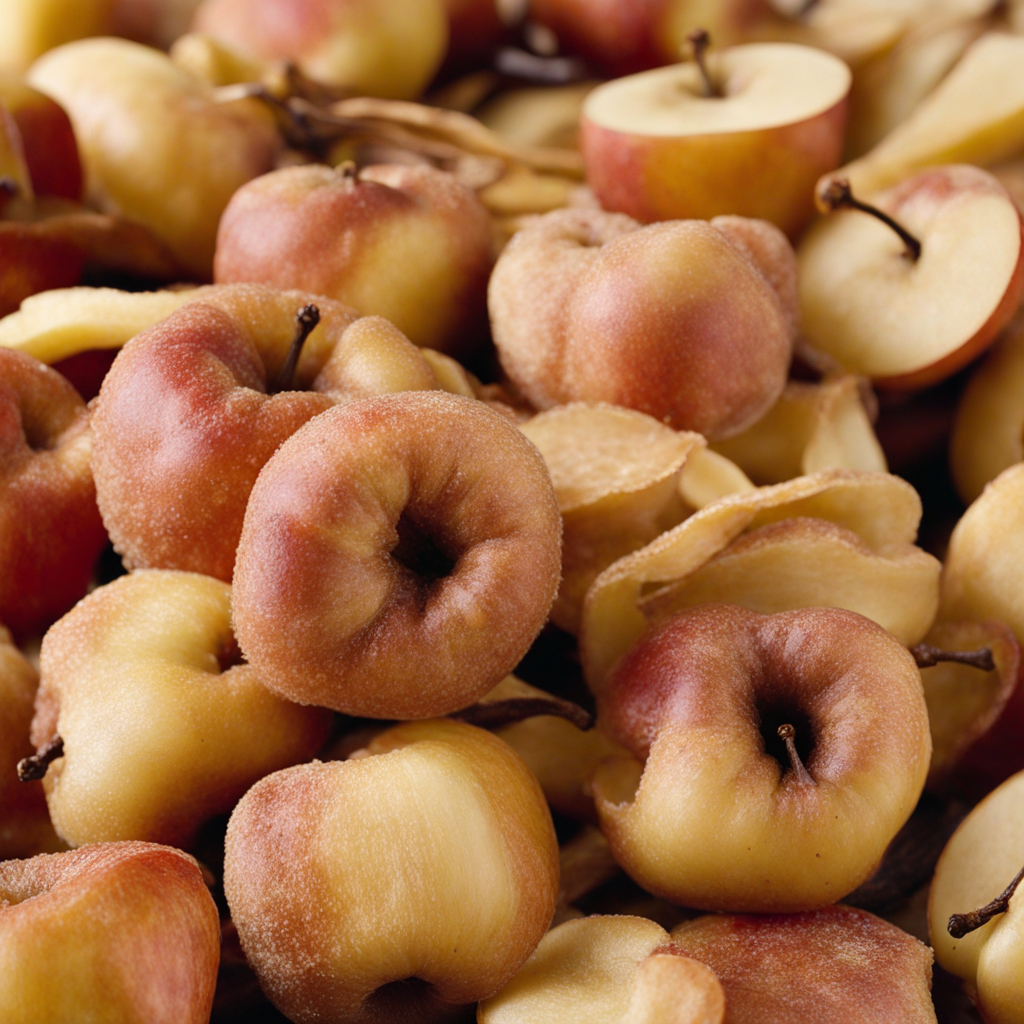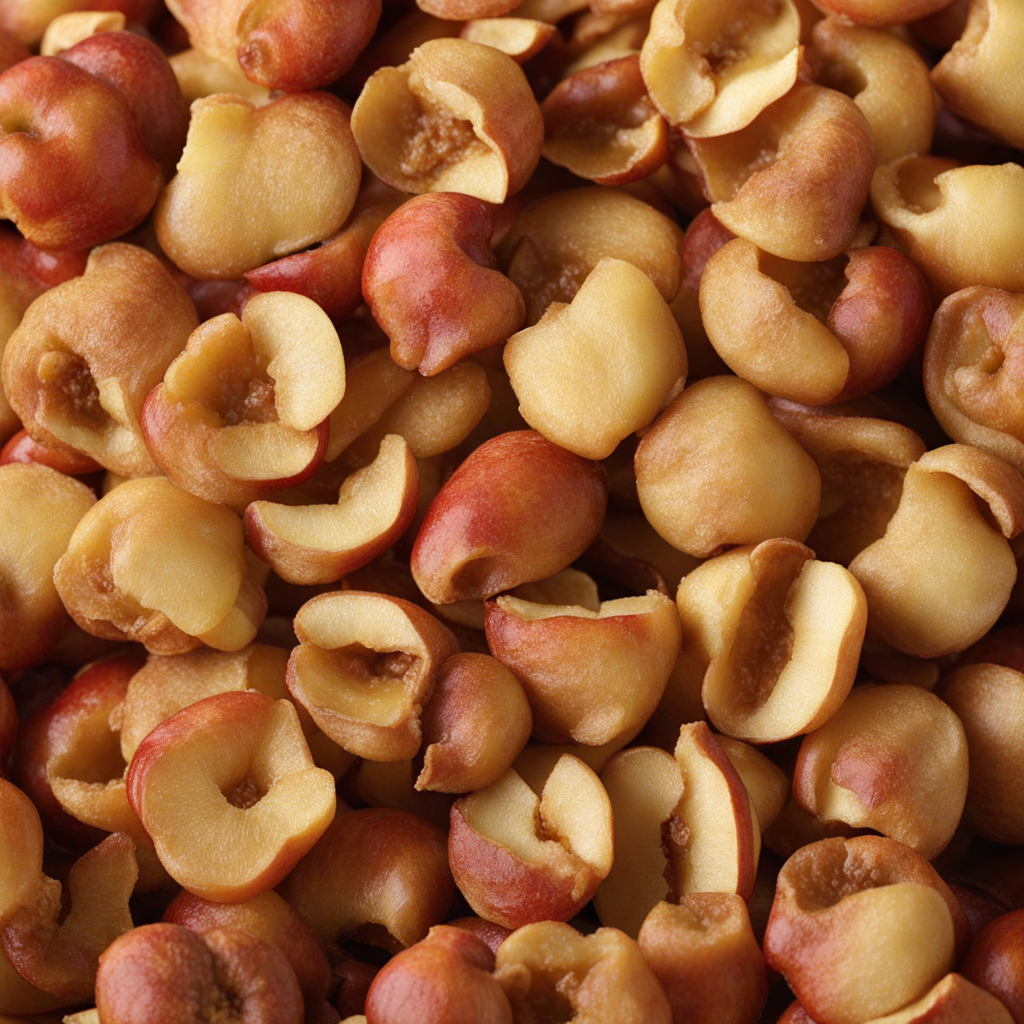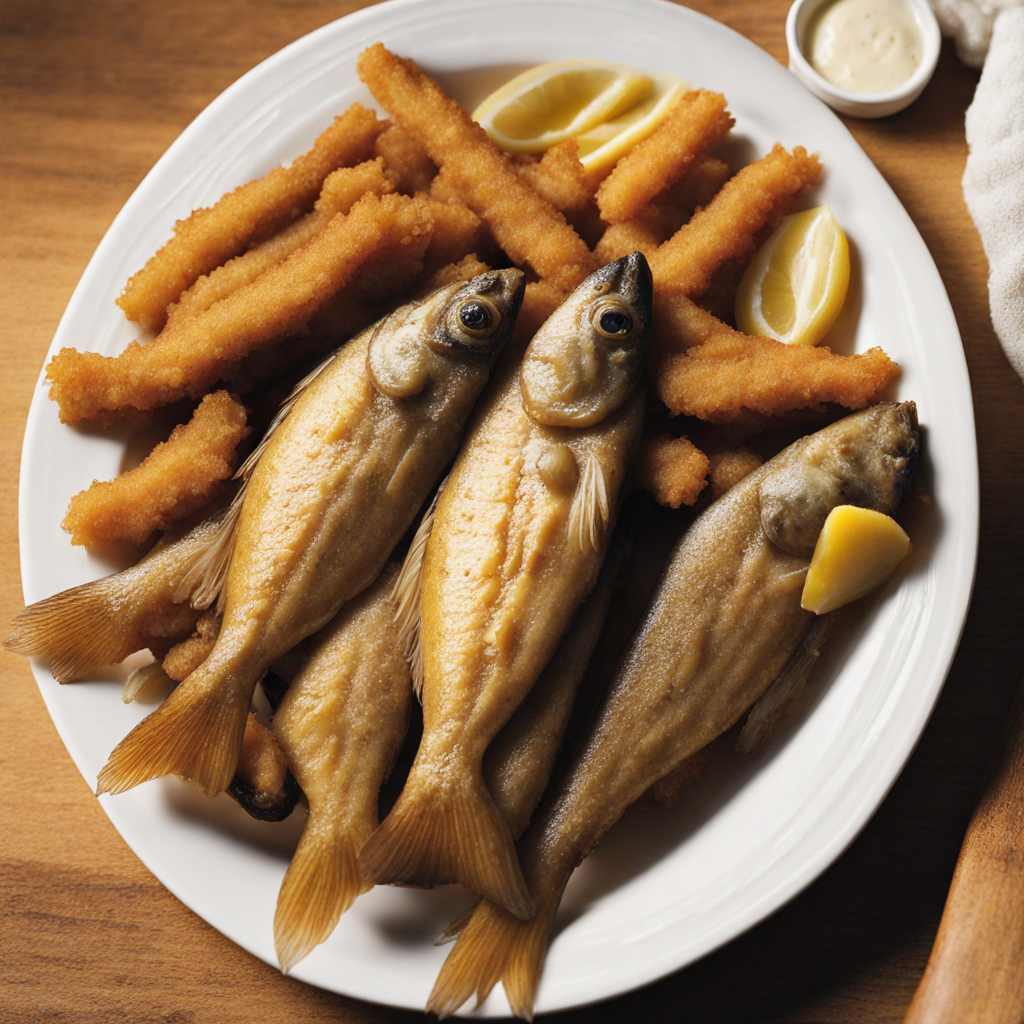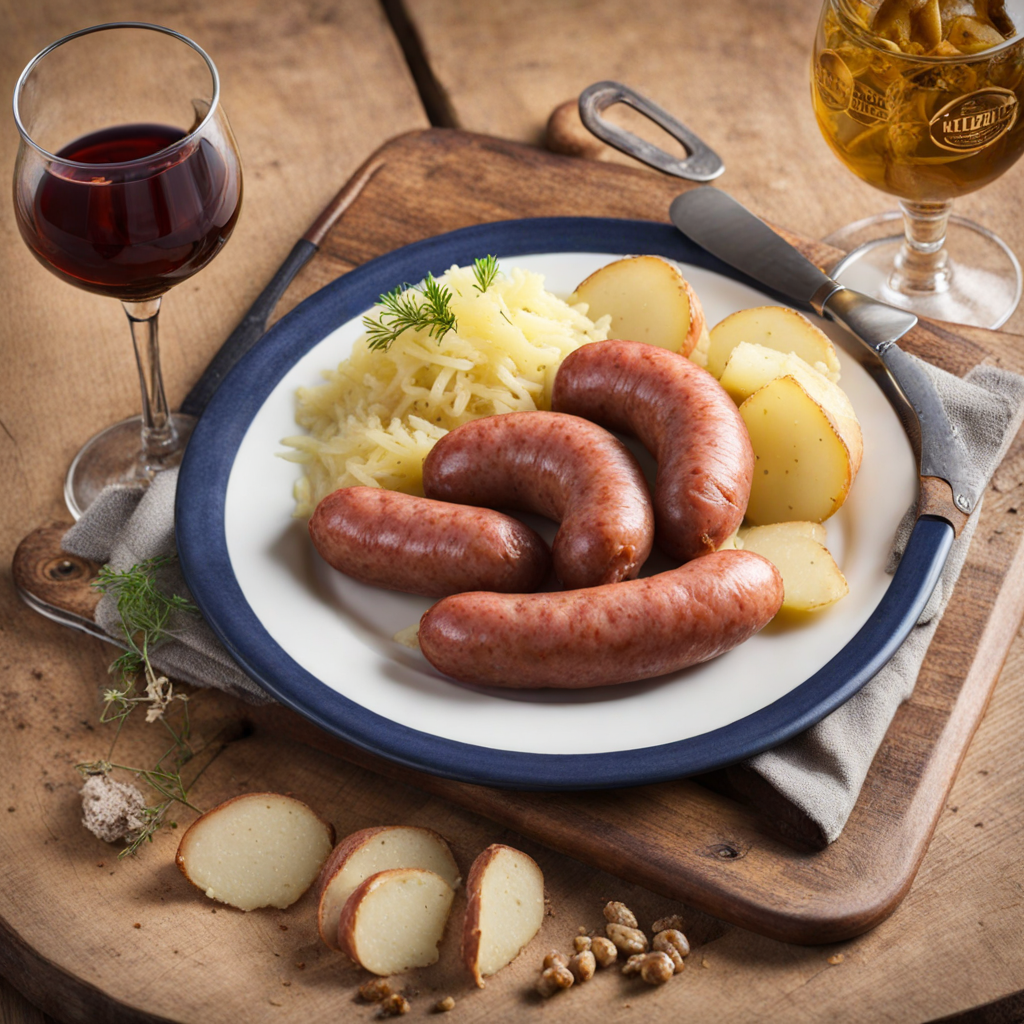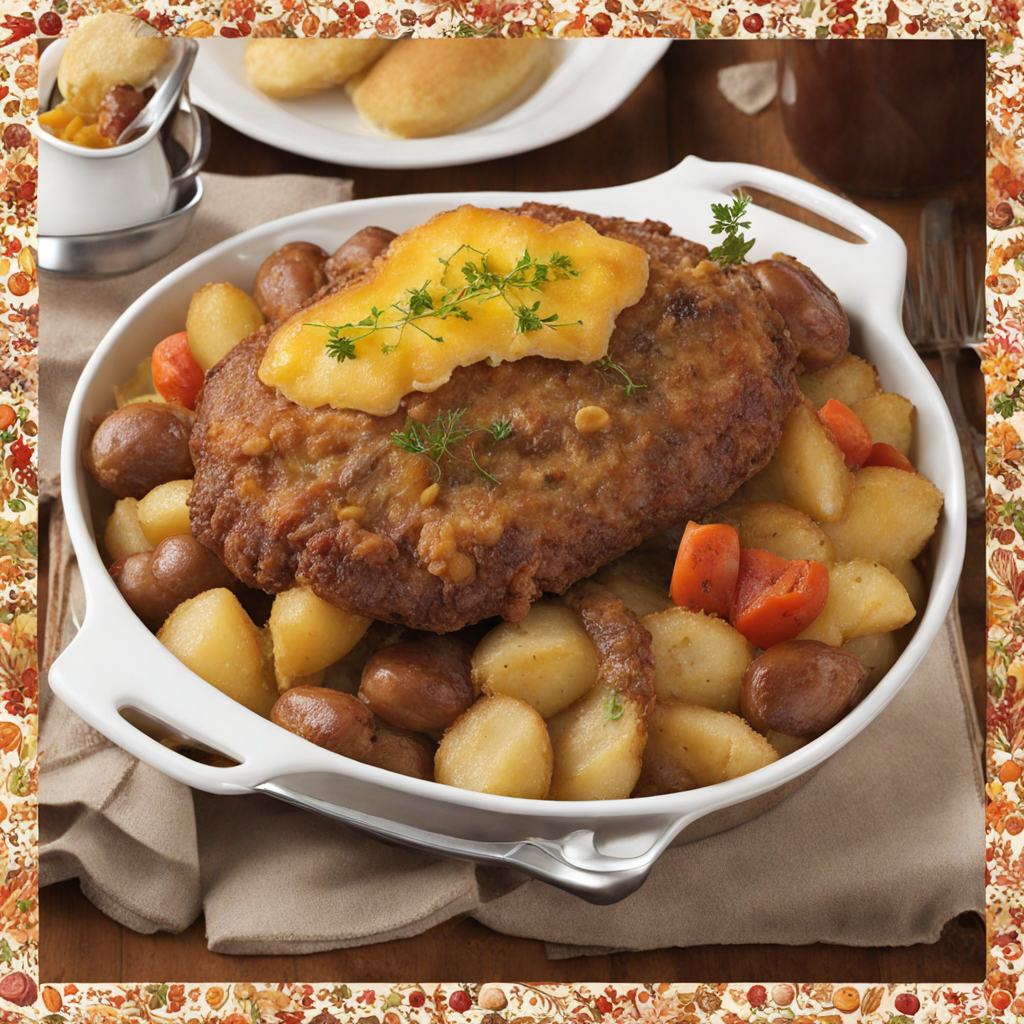Äppelklatzen
Äppelklatzen is a delightful Luxembourgish dessert that captures the essence of local produce with its simple yet heartwarming flavors. This dish primarily features apples, which are abundant in Luxembourg, combined with a rich, buttery dough that creates a delightful contrast of textures. The apples are often spiced with cinnamon or nutmeg, adding warmth and depth to the dish, while the dough envelops them, creating a comforting, rustic pastry that is both satisfying and nostalgic. The preparation of Äppelklatzen involves a straightforward method, where fresh, peeled apples are sliced and mixed with sugar and spices before being wrapped in a tender, flaky dough. This dough is usually made from basic ingredients such as flour, butter, and eggs, resulting in a pastry that is rich yet not overly heavy. Once baked, the edges of the dough become golden brown, crisping up beautifully while the apples inside soften, releasing their juices and flavors. The aroma wafting from the oven is enough to entice anyone, making it an ideal treat for gatherings or family meals. Served warm, Äppelklatzen is often accompanied by a dollop of whipped cream or a scoop of vanilla ice cream, enhancing the experience with a creamy contrast that perfectly complements the dish's sweetness. This dessert not only showcases the natural flavors of Luxembourg's apples but also reflects the country's culinary traditions that prioritize simplicity and quality ingredients. Each bite of Äppelklatzen feels like a warm hug, inviting food lovers to explore the comforting taste of Luxembourg.
How It Became This Dish
The History of Äppelklatzen: A Culinary Gem from Luxembourg #### Origins Äppelklatzen, a traditional dish hailing from the small yet culturally rich Grand Duchy of Luxembourg, offers a fascinating glimpse into the country's agricultural heritage and culinary traditions. The name "Äppelklatzen" translates to "apple mush" in Luxembourgish, and the dish is primarily made from apples, sugar, and spices, with a creamy texture reminiscent of a compote or pudding. It is typically served warm, often accompanied by bread or as a filling for pastries. The origins of Äppelklatzen can be traced back to the agrarian lifestyle of Luxembourg's rural communities. The region is known for its fertile soil and a favorable climate for apple cultivation, which has been a staple fruit in the area for centuries. The practice of preserving apples in various forms, whether through drying, stewing, or mashing, reflects the necessity of utilizing seasonal produce and minimizing waste—a common theme in traditional European cuisines. Historically, apples were abundant in Luxembourg, with many households planting their own orchards. In times of scarcity or during the long winter months, dishes like Äppelklatzen provided comfort and sustenance. This culinary tradition likely emerged in the 19th century when Luxembourg experienced socio-economic changes, including industrialization and urban migration. As rural populations dwindled, the need to preserve and celebrate local food traditions became increasingly important. #### Cultural Significance Äppelklatzen is more than just a delicious dish; it embodies the cultural identity of Luxembourg. The preparation and consumption of Äppelklatzen are often associated with family gatherings and communal celebrations. It is a dish that evokes nostalgia, reminding Luxembourgers of their childhood and the warmth of home-cooked meals. Its significance is amplified during autumn, when apples are harvested, and communities come together for harvest festivals and apple-picking events. In Luxembourg, food is deeply intertwined with cultural identity, and traditional dishes like Äppelklatzen play a crucial role in maintaining that identity. The dish is often featured at local fairs, markets, and festive occasions, where it is served alongside other regional specialties. Its presence in these communal settings reinforces social bonds and fosters a sense of belonging among Luxembourg's diverse population. Moreover, Äppelklatzen reflects the broader European culinary landscape, showcasing the common practice of using seasonal fruits in desserts. Many countries have their own versions of apple-based dishes, from French tarte tatin to German apfelstrudel. However, Äppelklatzen maintains a unique character, distinguished by its simplicity and the way it highlights the natural sweetness of apples. #### Development Over Time The evolution of Äppelklatzen can be viewed through the lens of changing culinary practices, agricultural developments, and socio-economic shifts. In its early forms, the dish was likely made using simple techniques and ingredients readily available to rural households. As Luxembourg's society changed, so too did the methods of preparation and presentation. With the advent of industrialization in the late 19th and early 20th centuries, Luxembourg experienced significant transformations in food production and consumption. The introduction of modern kitchen appliances and the availability of processed ingredients began to influence traditional recipes. While some families continued to prepare Äppelklatzen using time-honored methods, others adapted the dish to reflect contemporary tastes and conveniences. The latter half of the 20th century saw a renewed interest in traditional foods, spurred by a growing awareness of the importance of local produce and sustainable practices. This movement prompted a revival of interest in Äppelklatzen, as chefs and home cooks sought to honor their culinary heritage. In response, local farmers began promoting heirloom apple varieties, some of which had nearly been forgotten, revitalizing the flavors and textures essential to the dish. In the 21st century, Äppelklatzen has found its place on the menus of both traditional and modern restaurants throughout Luxembourg. Innovative chefs have experimented with the dish, incorporating contemporary presentation styles and pairing it with gourmet accompaniments, such as artisanal cheeses or local charcuterie. This blending of old and new has not only preserved the dish's legacy but also introduced it to a broader audience. Social media and the rise of food blogging have played a significant role in popularizing Äppelklatzen beyond Luxembourg's borders. The dish is frequently featured in regional food festivals, culinary competitions, and international gastronomy events, showcasing Luxembourg’s rich culinary traditions to a global audience. This visibility has contributed to a growing appreciation for Luxembourgish cuisine and has encouraged culinary tourism, with visitors eager to taste authentic local dishes. #### Conclusion Äppelklatzen stands as a testament to the enduring power of food as a cultural artifact. Its simple yet comforting nature, rooted in the practicalities of rural life, resonates with both the history and the evolving identity of Luxembourg. As it continues to adapt to contemporary tastes while remaining true to its origins, Äppelklatzen serves as a delicious reminder of the importance of preserving culinary heritage. In a world increasingly characterized by globalization and homogenization, the story of Äppelklatzen is a celebration of local flavors and traditions. It embodies the essence of Luxembourg’s agricultural bounty and the communal spirit of its people. As generations pass, the legacy of Äppelklatzen will likely endure, evolving yet remaining a cherished part of Luxembourg’s culinary landscape, connecting the past with the present and future.
You may like
Discover local flavors from Luxembourg


